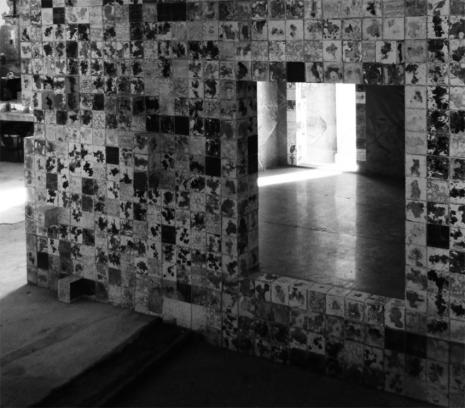The Ochiishi Plan : Rotting Copperplate Prints
DOI:
https://doi.org/10.69598/sbjfa130903Keywords:
Copperplate, Japanese Tea Ceremony Room, Rottting ProcessAbstract
Way of being of copperplate print works Generally, copperplate work is printed on paper and framed, and then displayed on a wall in a museum, gallery, or house, in such a careful way as to be protected from any deterioration, such as yellowing, tearing, or molding. This is the ordinary way of being of copperplate prints. The copperplate print works shown in the present article have been made for being in the exact opposite way, in which the course of deterioration, or the process of weathering and rotting, as such consists of a part of being of the work. Each work has been exhibited as an installation art work encompassing the phase of rotting. They have been printed not on paper, but on plaster cubes (10 cm on a side) through the plaster-printing technique, a special printing technique that does not use a pressing machine. The work is still in progress, and once completed, 5,000 plaster cubes with copperplate prints will constitute an installation art work. Before completion, some cubes have shown a sign of deterioration. On the cubes the pictures installed in an earlier period about 10 years ago, the pictures are partially wearing away and some portions are being eroded by water droplets. Some cubes are chipped on the edges or cracking. While accepting those deterioration effects as such, the artists pile up new plaster cubes upon those weathering cubes next summer. Just after being made, the cubes begin rotting, and repeat the same thing over and over again. No one knows when the installation work is completed. Perhaps, there may not be a process or phase of completion. Rotting urges the artists to further make up the cubes. That is the way of being of this copperplate print installation.
Downloads

Downloads
Published
How to Cite
Issue
Section
License
The journal's editorial team does not have to agree with the views and comments in the author's article, nor are they responsible for the comments.











